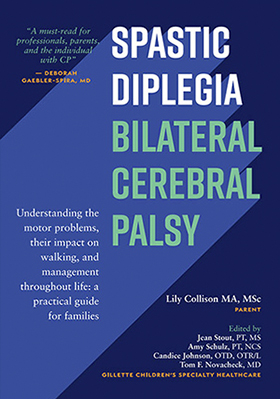There is a usual sequence and timing to the achievement of gross motor milestones in the typically developing child. A large study conducted by the WHO found that, with some variation, almost all typically developing children have achieved independent sitting by nine months and independent walking by 18 months. The average age and age range for achieving each of the six gross motor milestones is as follows:
- Sitting without support 6.0 (3.8–9.2) months
- Standing with assistance 7.6 (4.8–11.4) months
- Hands and knees crawling 8.5 (5.2–13.5) months
- Walking with assistance 9.2 (5.9–13.7) months
- Standing alone 11.0 (6.9–16.9) months
- Walking alone 12.1 (8.2–17.6) months
These milestones are an important reference when a child appears to be late in development compared with typically developing children. One of the hallmarks of CP is that the child may be late achieving gross motor milestones. In fact, that may be what first alerts parents and/or professionals to a problem. It is also worth noting that not all children (even typically developing children) crawl.
The earlier motor development stages—sitting, standing, crawling—are important for the development of walking. Earlier developmental stages include the precursors of later ones. To the extent possible, following (going through) these motor development stages is important for the child with CP. However, there is a balance to be achieved. For example, research has shown that providing powered mobility to children as young as 2.5 years of age who have more severe motor disabilities is beneficial in terms of function and development. With powered mobility the children’s language, exploration, social function, and efforts at self-initiated movement showed improvement. Even for children with less severe motor disability, there may be a balance between following normal motor development stages and promoting the child’s activity and participation.
A web link to the WHO gross motor milestones is included at the end. A web link to the developmental milestones published by the US Centers for Disease Control and Prevention (CDC) is also included. In addition to movement and physical development, the CDC’s information sheet includes social/emotional, language/communication, and cognitive (learning, thinking, and problem-solving) development for children up to five years of age.
Useful web links
- WHO (2019) Motor Development Milestones. (online)
- CDC (2019) CDC’s Developmental Milestones. (online)
- Healthy Children (n.d.) About Developmental Delays? (online) (Healthy Children is a website of the American Academy of Pediatrics.)
The above is an extract from Spastic Diplegia–Bilateral Cerebral Palsy available here.


